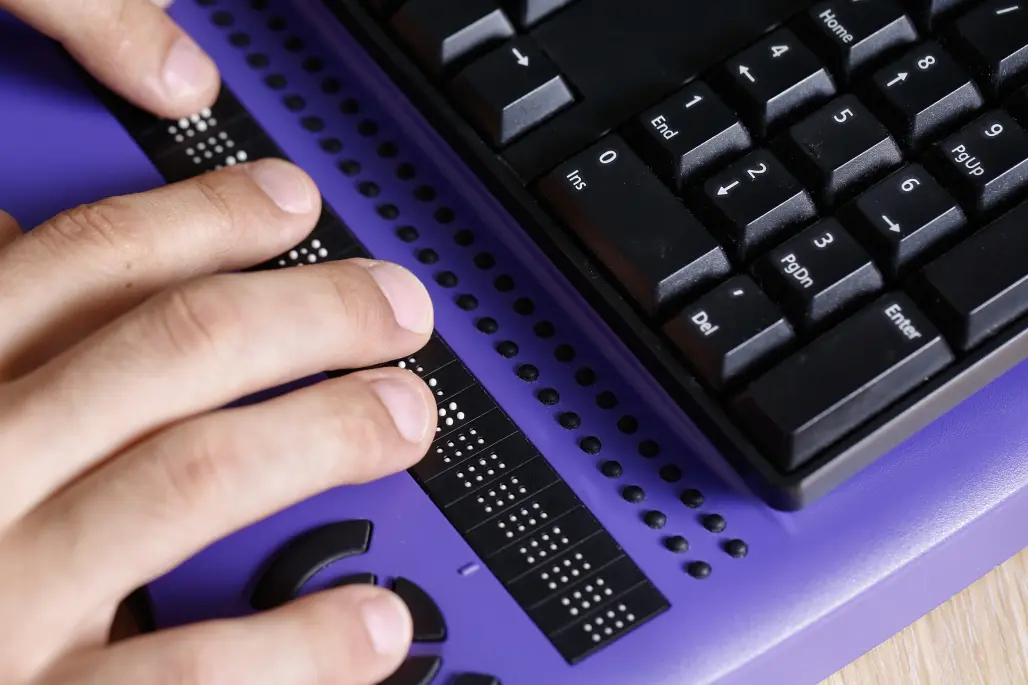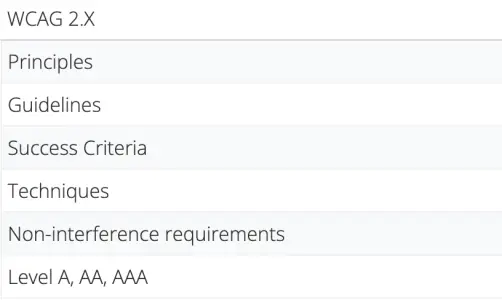What's New in WCAG 3.0 Guidelines

Big changes are coming to the W3C’s Web Content Accessibility Guidelines (WCAG) and it's important for organizations to be prepared. While the current WCAG 2.1 guidelines are set to be updated in the summer of 2021 with the release of WCAG 2.2, the next generation of guidelines, known as WCAG 3.0 , is already being planned, and is set to shake up existing practice.
Given the importance of adhering to WCAG guidelines both for enhancing website accessibility and avoiding lawsuits alleging noncompliance with the Americans with Disabilities Act (ADA), preparing your IT operations for the coming updates simply makes good business sense.
Here’s a closer look at what’s new in the proposed WCAG 3.0 guidelines.
What’s coming in WCAG 3.0
WCAG 3.0 marks a significant moment for the accessibility industry. It sets out a new way to measure and monitor accessibility not only on websites, but on other applications and devices.
According to the draft, the name of the guidelines: “W3C Accessibility Guidelines (WCAG) 3.0,” was chosen to leverage the broad familiarity with the “WCAG” acronym. However, the new guidelines will be structured quite differently than WCAG 2.X series, and designed to be easier to understand, address more user needs and be geared toward developing technology.
Each of the guidelines has been designed to address documented needs of people with disabilities as they’re navigating websites and digital content. In the new guidelines, web content is defined as interactive content, static content, auditory and visual media, and augmented and virtual reality media.
Some of the specific proposed changes include:
An upgraded conformance model
Perhaps most notably, the new compliance structure shifts from using true/false-based success criteria to outcomes, which consider the needs of users for specific types of content. These outcomes are rated on a scale of 0 to 4 and can be combined with scores of other outcomes to determine a website’s accessibility.
In addition, WCAG 3.0 will take into account critical errors on a website. Critical errors are those that prevent a user from completing a task. While websites may contain a small number of accessibility errors, those that contain any number of critical errors are not considered WCAG 3.0-compliant.
Last but not least, the A, AA, and AAA levels used for scoring will be replaced by bronze, silver, and gold. In the first draft of WCAG 3.0, bronze has earned much of the focus, as it is roughly equivalent to the most commonly adopted A or AA conformance levels in WCAG 2.1. Details on the silver and gold levels have not yet been fully fleshed out.
Broader in scope beyond website content
As the internet of things continues to grow, accessibility guidelines must also expand to accommodate new technology use cases. WCAG 3.0 guidelines encompass laptops and desktop computers, along with mobile devices, wearable technology, and other Internet of Things devices (e.g. Alexa-enabled devices).
Other factors to know
For website owners, WCAG 3.0 standards are designed to be more easily understood so that appropriate actions can be taken to provide a more accessible experience. Guidelines are more granular and simpler than before; however, this also means they will likely be more numerous.
This alone indicates a drastic departure from the current 2.X series. The working draft for the proposed WCAG 3.0 guidelines , the first of which was published on January 21, 2021, explains more about how the guidelines relate to the previous 2.X series.
It’s important to note that the structure of WCAG 3.0 is considerably different from the WCAG 2.X series. And, unlike previous iterations of the standard, it will not be backward compatible. It will also incorporate content from and partially extend User Agent Accessibility Guidelines 2.0 [ UAAG20 ] and Authoring Tool Accessibility Guidelines 2.0 [ ATAG20 ].
WCAG 3.0 Draft Conformance Model
This model specifies how to determine and communicate the success with which a website, app, tool, etc. meets the WCAG guidelines. The WCAG 3.0 conformance model takes a different approach from the WCAG 2.X model. A good starting point for understanding the changes that might be coming in 3.0 is to see how the language relates to the 2.X series.
Here’s a basic breakdown of how the two sets of guidelines compare:


According to the working draft, its goal is to be more flexible for organizations (e.g., owners and developers of websites, apps, tools, etc.) and to encourage more accessible user experiences.
Different aspects of the draft WCAG 3 conformance model include:
- Conformance is more focused on processes (tasks such as ordering an item or registering for a class) rather than web pages.
- Outcomes can be rated, beyond just pass or fail. The rating scale is 0-4.
- The ratings are averaged for a total score. There is also a score for each functional category (e.g., vision, hearing, memory, etc.).
Different scoring levels are also used in 3.0:
- Conformance levels are Bronze, Silver, Gold.
- In WCAG 2.X. , they are Level A, Level AA, Level AAA.
- Bronze is similar to WCAG 2.X. Level AA, although not fully equivalent.
- Bronze conformance requires:
- No critical errors
- Total score of 3.5 or higher
- Score of 3.5 or higher in each functional category
- Silver and Gold levels require “holistic tests” such as assistive technology testing and usability testing with participants with disabilities.

When to expect WCAG 3.0
The targeted goal for the introduction of WCAG 3.0 is sometime in 2023 , allowing for enough time for testing, verification, and documentation. Contents of WCAG 3.0 are subject to change multiple times during the drafting process and are not to be considered final until it is officially published. The specification will be updated regularly to align with changing technology by updating and adding methods, outcomes, and guidelines.
While it is important to keep track of developments, it is not recommended to start building WCAG 3.0 into your accessibility program until it is published as an official W3C recommendation.
Being proactive with WCAG 2.2 guidelines
Even after WCAG 3.0 is released, it is not expected that it will supersede WCAG 2.0 for at least several years after its release. WCAG 2.X standards are not becoming redundant, nor will sites complying to those standards be considered inaccessible. As the official release of WCAG 3.0 will take a few years, it is expected that national laws referencing accessibility standards will take some significant time beyond that to update their references from WCAG 2.X to WCAG 3.0. Therefore, WCAG 3.0 should be considered the long-term approach to measuring and monitoring accessibility, but WCAG 2.2 is still the relevant active standard to comply with as of early 2021.
It is advisable that companies start preparing for WCAG 2.2 guidelines now, both to help future-proof their accessibility efforts and to ensure better support for the needs of web and mobile users with disabilities.For more information on WCAG 2.2, and what organization’s need to do to prepare, check out our WCAG 2.2 blog post.
A comprehensive, cost-effective approach to enterprise compliance
Complying with WCAG at enterprise scale can be a challenging task. It requires extensive attention to technical details and can be extremely time-consuming. Given the technical and resource challenges of staying up-to-date with the latest version of the guidelines, many organizations struggle to achieve even basic levels of compliance, hampering the success of their digital initiatives and putting their organizations at risk.
At Crownpeak, we're passionate advocates for web accessibility and believe in helping our customers achieve an inclusive and exceptional digital experience for all.
That’s why we built Digital Quality Management, a platform designed to help global enterprises meet their organizational quality, accessibility, and consistency standards.
Combining automated scanning with prioritized, actionable fixes and dedicated expert advisors to help you along the way, Crownpeak DQM provides the industry's fastest, most effective enterprise-grade accessibility platform. DQM is continually updated in accordance with the latest WCAG guidelines, so using DQM for your website streamlines your ongoing WCAG compliance efforts.
Are you interested in learning more about how Crownpeak DQM can help simplify becoming ADA- and WCAG-compliant across your web presence? Request a Web Accessibility Assessment or
Try it Free
, today.